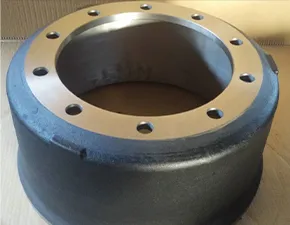
-
 Afrikaans
Afrikaans -
 Albanian
Albanian -
 Amharic
Amharic -
 Arabic
Arabic -
 Armenian
Armenian -
 Azerbaijani
Azerbaijani -
 Basque
Basque -
 Belarusian
Belarusian -
 Bengali
Bengali -
 Bosnian
Bosnian -
 Bulgarian
Bulgarian -
 Catalan
Catalan -
 Cebuano
Cebuano -
 Corsican
Corsican -
 Croatian
Croatian -
 Czech
Czech -
 Danish
Danish -
 Dutch
Dutch -
 English
English -
 Esperanto
Esperanto -
 Estonian
Estonian -
 Finnish
Finnish -
 French
French -
 Frisian
Frisian -
 Galician
Galician -
 Georgian
Georgian -
 German
German -
 Greek
Greek -
 Gujarati
Gujarati -
 Haitian Creole
Haitian Creole -
 hausa
hausa -
 hawaiian
hawaiian -
 Hebrew
Hebrew -
 Hindi
Hindi -
 Miao
Miao -
 Hungarian
Hungarian -
 Icelandic
Icelandic -
 igbo
igbo -
 Indonesian
Indonesian -
 irish
irish -
 Italian
Italian -
 Japanese
Japanese -
 Javanese
Javanese -
 Kannada
Kannada -
 kazakh
kazakh -
 Khmer
Khmer -
 Rwandese
Rwandese -
 Korean
Korean -
 Kurdish
Kurdish -
 Kyrgyz
Kyrgyz -
 Lao
Lao -
 Latin
Latin -
 Latvian
Latvian -
 Lithuanian
Lithuanian -
 Luxembourgish
Luxembourgish -
 Macedonian
Macedonian -
 Malgashi
Malgashi -
 Malay
Malay -
 Malayalam
Malayalam -
 Maltese
Maltese -
 Maori
Maori -
 Marathi
Marathi -
 Mongolian
Mongolian -
 Myanmar
Myanmar -
 Nepali
Nepali -
 Norwegian
Norwegian -
 Norwegian
Norwegian -
 Occitan
Occitan -
 Pashto
Pashto -
 Persian
Persian -
 Polish
Polish -
 Portuguese
Portuguese -
 Punjabi
Punjabi -
 Romanian
Romanian -
 Russian
Russian -
 Samoan
Samoan -
 Scottish Gaelic
Scottish Gaelic -
 Serbian
Serbian -
 Sesotho
Sesotho -
 Shona
Shona -
 Sindhi
Sindhi -
 Sinhala
Sinhala -
 Slovak
Slovak -
 Slovenian
Slovenian -
 Somali
Somali -
 Spanish
Spanish -
 Sundanese
Sundanese -
 Swahili
Swahili -
 Swedish
Swedish -
 Tagalog
Tagalog -
 Tajik
Tajik -
 Tamil
Tamil -
 Tatar
Tatar -
 Telugu
Telugu -
 Thai
Thai -
 Turkish
Turkish -
 Turkmen
Turkmen -
 Ukrainian
Ukrainian -
 Urdu
Urdu -
 Uighur
Uighur -
 Uzbek
Uzbek -
 Vietnamese
Vietnamese -
 Welsh
Welsh -
 Bantu
Bantu -
 Yiddish
Yiddish -
 Yoruba
Yoruba -
 Zulu
Zulu
Understanding the Role of Truck Brake Drum Pot and Belly in Safety and Performance
Understanding the Truck Brake Drum Pot Belly
When it comes to the maintenance and efficiency of heavy-duty vehicles, particularly trucks, the brake system is paramount. One of the critical components in this system is the brake drum, which plays a significant role in ensuring that the vehicle can stop effectively and safely. Within the brake drum assembly, a unique phenomenon known as the brake drum pot belly can occur, impacting the overall performance of the braking system.
What is the Brake Drum?
To grasp the significance of a pot belly in this context, we must first understand what a brake drum is. The brake drum is a cylindrical component located within the wheel hub of a vehicle. It is designed to work in conjunction with brake shoes to slow down or stop the truck. When the driver applies the brakes, the brake shoes are pushed against the inner surface of the drum, creating friction that slows the wheel's rotation.
The Pot Belly Phenomenon
The term pot belly refers to a specific deformity that can develop on the surface of the brake drum due to excessive heat and wear. This deformation resembles a bulge or belly on the drum's exterior, which can negatively affect the braking performance. The pot belly typically arises from prolonged exposure to high friction conditions, often seen in commercial vehicles that regularly carry heavy loads and operate under strenuous driving conditions.
Causes of Brake Drum Pot Belly
Several factors can contribute to the development of a pot belly in brake drums
1. Overheating When brakes are applied frequently, especially in steep terrain or during heavy loads, the heat generated can exceed the material’s capacity. This heat can cause the drum material to expand and, upon cooling, warp, leading to a pot belly.
2. Improper Adjustment If the brake system is not correctly adjusted, the brake shoes may not engage properly with the drum, leading to uneven wear and heating.
truck brake drum pot belly

4. Lack of Maintenance Regular inspections and maintenance of the braking system can help prevent or identify issues before they lead to more significant problems, such as a pot belly.
Impacts on Truck Performance
The occurrence of a pot belly on a brake drum can have several detrimental effects on truck performance. It can lead to reduced braking efficiency, longer stopping distances, and increased risk of brake failure. Additionally, the uneven surface caused by the pot belly can create vibrations and noise during braking, further compromising driver comfort and safety.
Preventing and Addressing Pot Belly Formation
To mitigate the risks associated with pot belly formation, truck owners and operators should adhere to several best practices
- Regular Inspections Routine checks of the brake system can help identify signs of wear or deformation early, allowing for timely repairs or replacements.
- Quality Components Investing in high-quality brake drums and shoes can reduce the risk of premature failure due to overheating or warping.
- Proper Brake System Adjustment Ensuring that the braking system is correctly adjusted according to manufacturer specifications can help maintain even wear and prevent overheating.
- Educating Drivers Training drivers to recognize signs of brake system issues and encouraging them to operate the vehicle within its load limits can further enhance brake life.
In conclusion, the pot belly phenomenon is an important issue within truck brake systems that warrants attention. By understanding its causes and impacts, operators can take proactive steps to maintain their vehicles, ensuring safety and efficiency on the road. Regular maintenance and the use of quality components are key to avoiding issues related to brake drum pot bellies and ensuring that trucks remain reliable workhorses in the transportation industry.
-
What Are Drum BrakesNewsJul.07,2025
-
Understanding Brake Drum MaterialNewsJul.07,2025
-
Semi-Trailer Brake Drum: A Key Component for Extreme Loads and Long-Distance TransportNewsJul.07,2025
-
Drum Brake Pads for SaleNewsJul.07,2025
-
Brake Drums for SaleNewsJul.07,2025
-
Brake Drum ManufacturerNewsJul.07,2025
-
Aluminum Brake Drums: The Future of High-Performance CarsNewsJul.07,2025
